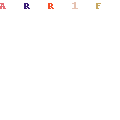
What is post-editing of machine translations?
Machine translation post-editing or MTPE is a process where a human translator reviews and edits the translation done by a machine to improve its quality to an agreed level. The human translator checks and corrects grammar, sentence structure, context and tone.
Post-editing is different from regular editing because it specifically refers to the editing of machine translated content. Editing, on the other hand, refers to fixing errors in human-translated content.
Machine translation produces a very basic output that in most cases is unsuitable for any serious use, and so needs some human input to produce a readable, usable, and understandable text.
What types of text are suitable for machine translations?
Good candidates for machine translation are texts that don’t require much creativity. Machine translation tools are generally better with short and simple sentences like technical instruction manuals or getting the general idea of what your overseas friend posted on their Facebook page. This is to be expected since computers are better than people at repetitive tasks, while humans are superior in their creative skills. This is why machine translation is not recommended for marketing texts or advertisements etc. Creativity is an inherent human quality.
What are the benefits of machine translation post-editing?
It’s quicker and cheaper. Normally, time is spent on both translation and editing. Now only editing time is needed.
The price of MTPE is 40-60% less than the rate for traditional translation, editing and proofreading. Depending on your quality demands, target audience, and style, we can offer light or full post-editing, each affecting the process duration and the final product price.
Light post-editing is done to make the content more understandable by correcting grammar and spelling mistakes if they affect the meaning. It includes:
- Rewriting confusing sentences partially or completely.
- Fixing machine produced mistakes, and deleting unnecessary or extra translation alternatives generated by the engine.
Full post-editing is a more complex form of editing where the machine-translated content is edited not only to make it more understandable but to ensure it is stylistically accurate and industry-appropriate.
Full post-editing tasks include all of the light post-editing tasks plus:
- Checking terminology against approved terminological resources to make sure it is consistent and appropriate.
- Cross-referencing translations against other resources.
- Making syntactic modifications in accordance with practices for the target language.
- Producing stylistically consistent, fluent content.
- Applying correct formatting and tagging, and
- Correcting all grammatical errors, typos, punctuation issues and spelling mistakes.
Full post-edited content should be as fluent as human translation. Therefore, content must meet the quality criteria defined by the client for human translations.
If you are interested in machine translation post-editing, contact us to discuss the levels of quality that can be achieved by post-editing and the best-fit process for your needs.
